When it comes to saving space, nothing beats a soundbar. But even though soundbars are basically simplified speaker setups, like any piece of sound equipment, choosing the right one can be tough. Because the optimal size and power of your audio configuration is always relative to the room it’s being placed inside, and is rarely intuitive.
Wohome S9920 Soundbar
A couple years ago, a 50” television would’ve been considered enormous. But average screen sizes are getting bigger, and consequently, many people feel drawn to larger sound equipment. As a general rule of thumb, you want a soundbar that’s within 30-inches of the size of your television.
That makes the Wohome S9920 Soundbar suitable for screens between 40 and 60-inches. If your display is much larger or much smaller than that, you’re probably going to want something bigger or smaller to match. Putting aside size, when you’re buying sound equipment, you’re really paying for two different categories of stuff.
The first category is raw sound quality, and the second category is additional features. People who are searching for a value oriented soundbar will typically care less about features and more about audio quality. More or less, that describes the S9920 Soundbar. What it lacks of features, it aspires to makeup in general sound performance.
That’s not to say the S9920 doesn’t bring anything extra to the table. For instance, it supports 3D surround sound backed by DSP technology for the kind of precision and clarity you generally don’t see under the $200 price point. When you start to compare the S9920 to smart-home speakers, only then will it begin to disappoint.
Build & Design
Though the S9920 is described as a 40-inch soundbar, it actually measures 38.6 x 4 x 4.1-inches. That lengthy body weighs about ten pounds, which is light enough to allow for some simple wall mounting options. it. Though it’s not absolutely necessary to mount this soundbar. The bottom side has a pair of rubberized feet, which make it possible to install it by simply placing the S9920 on the floor.
Those feet aren’t only made to stabilize the soundbar, or prevent it from tipping over. They also help keep its large vibrational body from creating a disturbance through vibrational contact. That can be important for not transmitting sound through floors and ceilings, and it can even have a marginal impact on audio quality.
One more thing to note is the power button on the backside, which is something many soundbars tend to overlook. But it can be more important when you’re dealing with a technology like this, which can move between wired and wireless operation.
Of course, you still need to run the power cord, but not having to run a bunch of audio wires can save time and energy. It also opens the possibility to connect with more than one device with very little effort.
Audio Connections
Turning to connectivity, this soundbar is capable of working either wired or wirelessly. When you go wireless, connections with Bluetooth 4.0 ensure about 33 feet of range. That range drops considerably when you start to add walls and other obstacles, but it’s no better or worse than similar Bluetooth equipment.
When you start exploring wired connections, you’re able to choose between coaxial, optical, USB, and RCA inputs. There are also some RCA and optical cables included with the S9920 to help you get started. Nothing truly unique is available for connection options, but all the essentials are covered.
Interface & Ease of Use
Operation is also pretty simple. You can either control the S9920 Soundbar with the aid of a remote control, or by using four analogue buttons that are positioned on the right side of the soundbar. Those buttons let you turn on/off the equipment, play/pause content, and adjust volume levels.
Unfortunately, this soundbar is not compatible with universal television remotes; you need to use their proprietary Wohome remote. Their remote is more than respectable, but it’s a small shame to have to add another remote to your collection.
What is there to like about the included remote? Mostly its simplicity. The topside features the two buttons you probably care about the most – mute and the power button. Beneath that, there’s a volume wheel and play/pause/skip buttons. They’re perfectly positioned on the basis on priority, easily identifiable, and even nicely placed for your thumb while holding the remote.
Beneath that, there’s eight function/feature buttons which let you switch between various modes. These are tucked towards the bottom of the remote, where they belong. For instance, this is where you’ll find the 3D button, which can swap the S9920 to play 3D surround sound. The SR-1 mode button amplifies the bass output, while the SR-2 mode was intended to construct greater vocal clarity. It’s useful for TV shows or new-casts which involve lots of dialogue.
Audio Quality
Within its lengthy body, you’ll find four 15W dynamic speakers, two 10W tweeters, and two bass reflex tubes. Tweeters are drivers made specifically for the treble range. Though the bass reflex tubes aren’t exactly the same as subwoofers, they do help round out the bass tones to an extent that most soundbars don’t.
Soundbars are a compromise. If you really want unmatched audio, then you have to bite the bullet and start using separate audio components. You’d want tweeters separated from your midrange drivers, and you’d want a subwoofer instead of a couple of bass tubes. But in going that route, you’d probably transform your room to something unrecognizable; a place littered with cables and speakers.
People who choose soundbars recognize the alternative is difficult, expensive, and sometimes unsightly. They want something simple, less expensive, and something that can stay out of the way. Though the S9920 faces every audio challenge inherent to any soundbar, it does so with impressive stride.
The only part of the tonal range that isn’t high-performance audio is the bass. Though the bass tubes and some software support can give the bass a real presence, it’s never going to be able to dominate the soundstage.
The remainder of the S9920’s sound performance is quite exceptional. Audiophiles wouldn’t be impressed by this sort of equipment, but it’s a logical improvement over the built-in audio equipment you’ll find inside televisions and other display devices, and that’s really the point at which comparison should be made. Measuring from that point, it’s easy to be impressed.
Related Audio Issues
Using the included remote control, you can switch between a couple different audio modes. Those modes affect the experience of using this speaker, and that makes it slightly more complicated to think about how the S9920 really sounds. At the same time, these extra audio modes are fairly easy to ignore. Especially if you end up finding one you really like and never switch it off, which is something many people end up doing.
Working together, the maximum power consumption of those midrange drivers and tweeters works out to 80W, which can output about 105 dB of sound. For the sake of comparison, 100 dB is about as loud as the roar of a chainsaw, and can easily lead to hearing damage over even relatively short periods of time. In other words, the S9920 is capable of being loud. Probably louder than most people want.
However, the S9920 doesn’t have any noteworthy features when it comes to expandability. It’s not possible to do more elaborate audio setups based around the S9920, like running a second soundbar on the opposite side of the first one. This kind of expandability is something not many people are looking to find, but it’s something to keep in mind.
Other Considerations
These days, it’s actually pretty rare for large speakers like the S9920 to not include some form of microphone support. The fact such features are missing could be a bad thing, or it could be a great thing. If you don’t care about having voice control over your speaker, skipping over those features can easily save you $50.
The Wohome S9920 includes a remote control, power adapter, digital optical cable, and Stereo RCA to 3.5mm audio cable. It’s a bit confusing why the power adapter wasn’t constructed inside of the soundbar. However, having to run a boxy adapter isn’t much of an inconvenience. The fact the cable can run about ten feet doesn’t hurt, either.
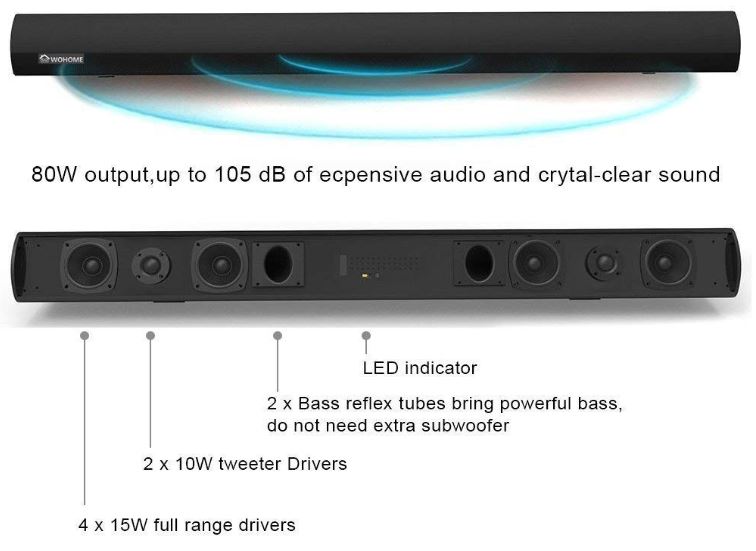
The S9920 includes a one-year warranty. That’s not a terribly impressive warranty, but it’s enough time to ensure you don’t receive some kind of defective product.
It also includes a pair of mounting screws and wall mount brackets. The mounting brackets are pretty simple. They’re basically just a piece of metal you can nail to a wall. However, the included mounting instructions are not terribly informative. They really only provide you with enough information to prevent you from making a catastrophic mistake with your installation.
Who Should Choose the Wohome S9920 Soundbar?
The mounting equipment is a little pathetic, but the fact there’s any included mounting equipment at all is really a cherry on top. The Wohome S9920 isn’t trying to sell you a bunch of extra features, like fantastic mounting equipment or microphones. It’s a soundbar focused on loud and affordable audio quality. The audio hardware is fairly competitive for a soundbar in this price range.

Wohome’s audio isn’t trying to replace a $1,500 surround sound setup or an expensive model like the Bluesound Pulse 2i, it’s trying to replace the kind of feeble speakers you find built inside televisions. Knowing that’s the goal its developers set out to achieve, it’s fair to call the S9920 a success, though with a few caveats in mind.
For aesthetic reasons, people often like selecting soundbars that are similarly sized to their television. The S9920 can appear a little small next to a 60” screen. But appearances side, it delivers all the audio you’d need for a screen of that side. Which makes it a pretty good choice for someone who’s looking a highly affordable and no-nonsense type of soundbar.
Meet Ry, “TechGuru,” a 36-year-old technology enthusiast with a deep passion for tech innovations. With extensive experience, he specializes in gaming hardware and software, and has expertise in gadgets, custom PCs, and audio.
Besides writing about tech and reviewing new products, he enjoys traveling, hiking, and photography. Committed to keeping up with the latest industry trends, he aims to guide readers in making informed tech decisions.


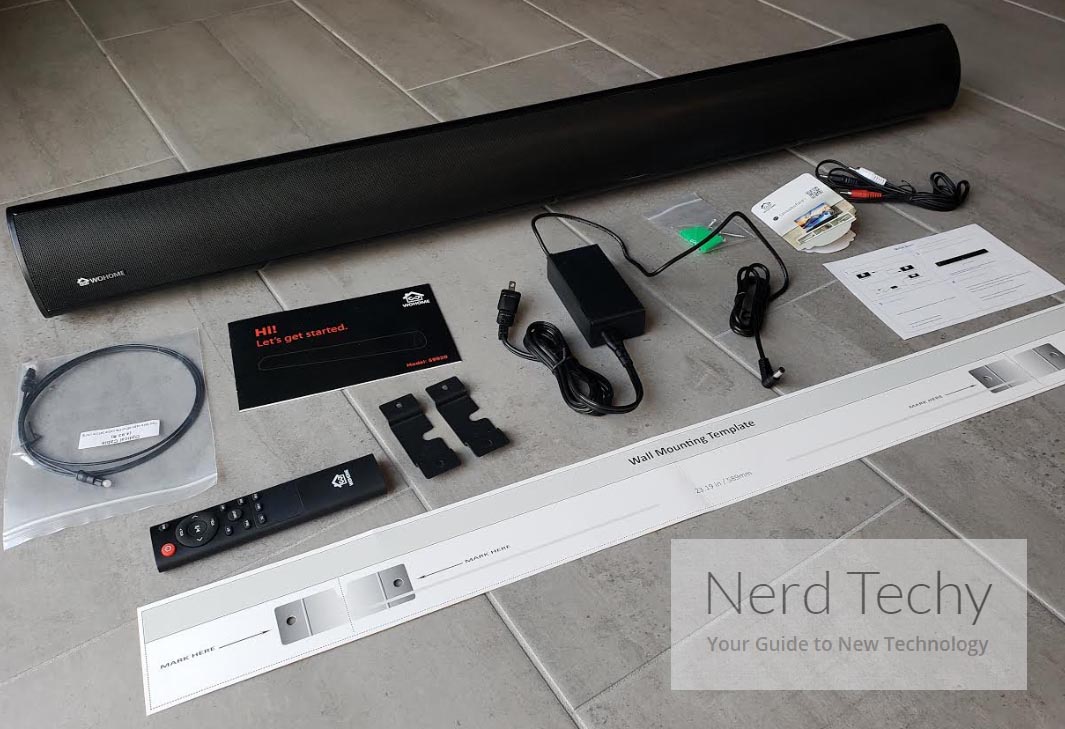

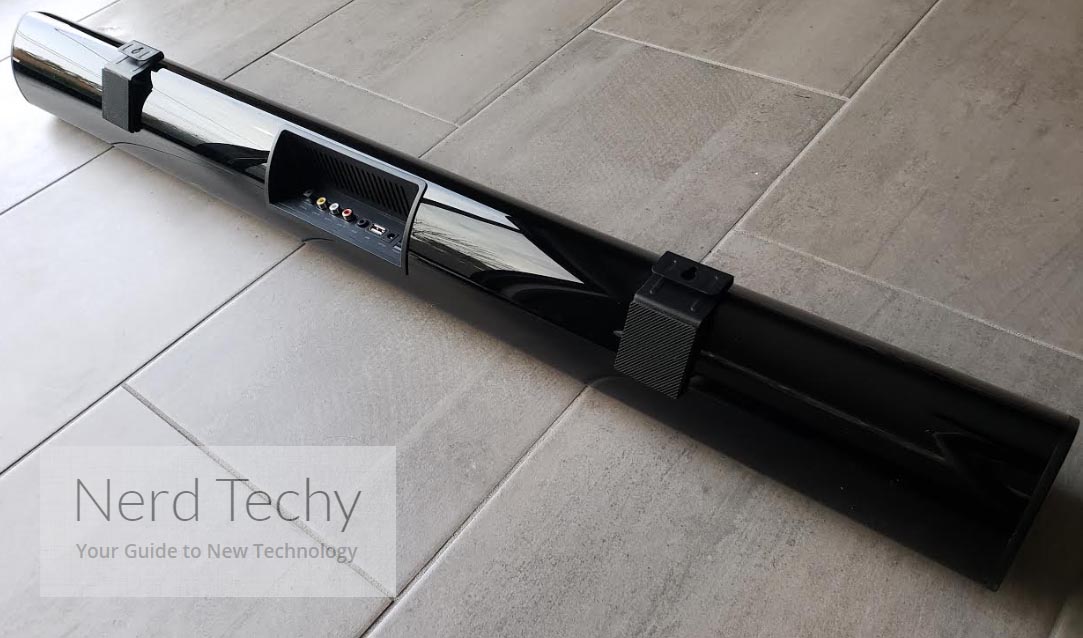


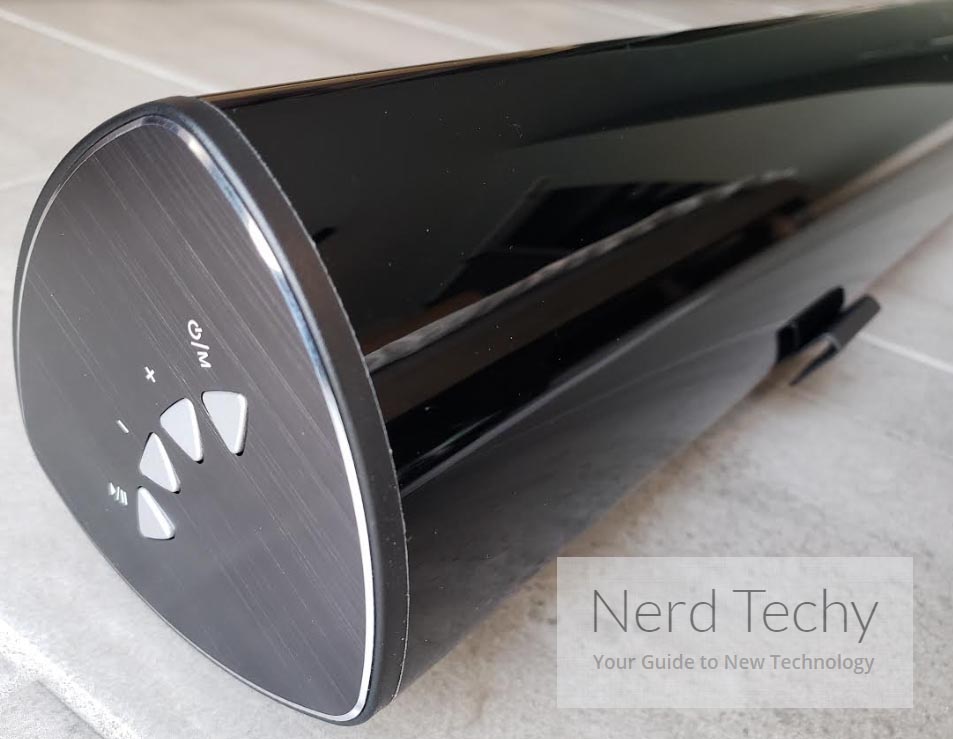
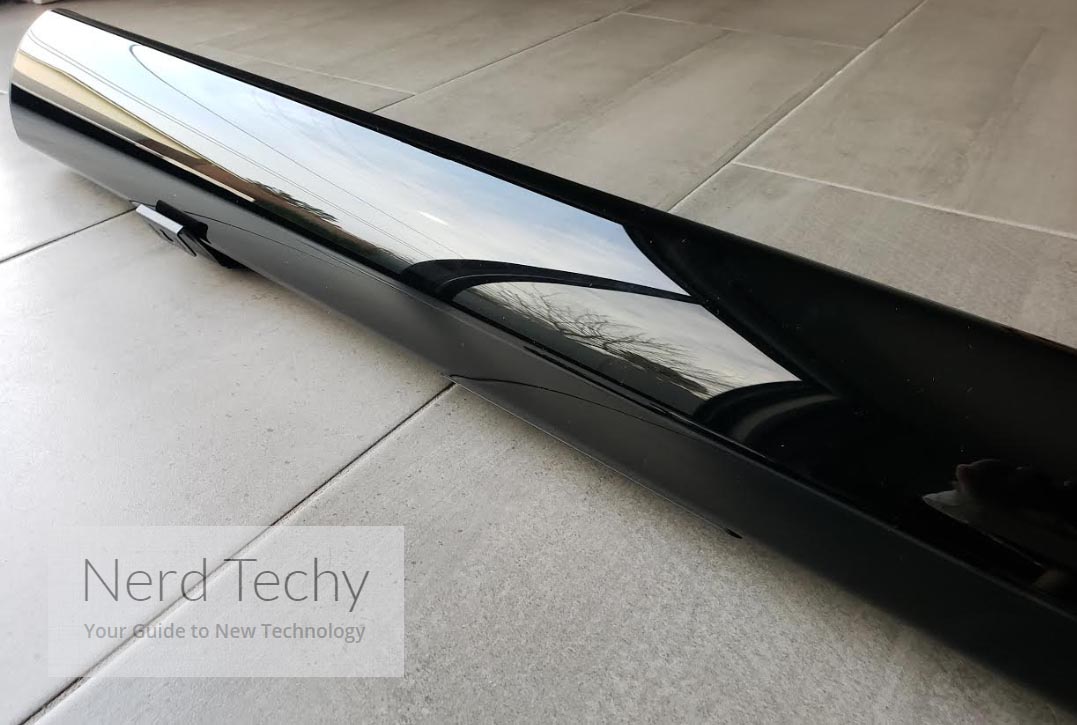
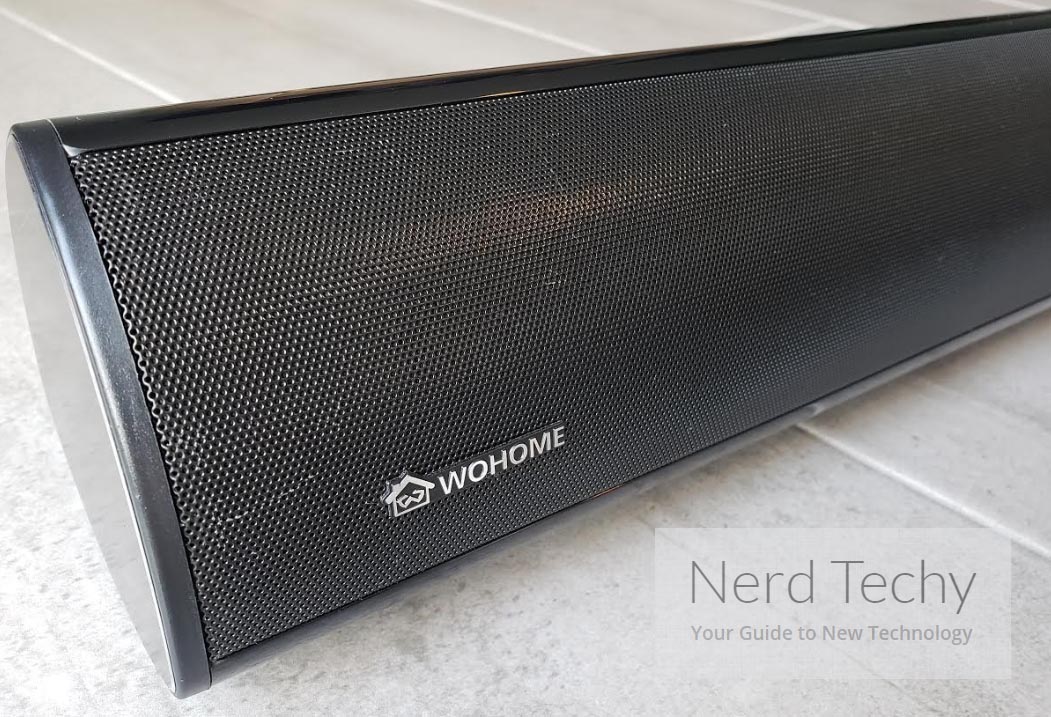
Will this work not with Samsung Qled 49 inch TV? Will it sound like surround sound when watching a movie on TV, Netflix or Amazon Prime?
Yes, it will work with a Samsung QLED TV. It’s best to connect it via Optical Out on the back of the TV. I wouldn’t say it would be like surround sound, since true surround sound needs to be setup in certain areas of the room (front, center, rear, subwoofer, etc.) It’ll definitely improve your TV’s audio, but I would not compare it to real surround sound.
Does the Wohome sound bar work with Westinghouse TVs?
Do you know how/if it’s possible to enter pairing mode without the remote? I cannot find the user guide online (or at home)?
I lost my remote and cannot find
model # Replacement remote to use with my Model 505 soundbar. Any idea? A universal is good enough for me.
What is the code to pair a wohome to a dish tv remote
On the Model S88, I cannot find a way to ‘set’ the Mode for the soundbar. Every time it powers down, it goes back to the default Mode which is NOT what I want. How do I set the Mode I use as the custom default?? Mike
Do you by any chance know what the code would be for a Wohome S9920 remote?